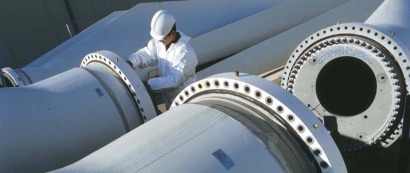
The current situation is clearly at odds with the intention of the authorities to promote renewables as a key area for the development of the Hungarian economy. This is all the more regrettable as EU level objectives for 80-95% carbon free energy sector by 2050, and strong positive public opinion (90%) clearly justify a strong development of wind energy.
The country was due to have 330 MW of wind energy capacity installed by the end of 2010 according to the country's National Renewable Energy Action Plan, but ended up with just 295 MW. The missing capacity represents €42 million in lost investments, EWEA has calculated. Although capacity has slightly increased since, this worrying trend of underachievement could continue in 2011. Hungary's 2020 target in the NREAP is for just 750 MW of wind by 2020.
Among the EU-27 Hungary comes last in terms of renewable electricity targets. It is half of the 1,200 MW EWEA and Hungarian Wind Energy Association believes can be easily connected and significantly below 2,020 MW the Hungarian Windpower Association believes could be installed if circumstances are right.
By adopting such an unambitious target for 2020, Hungary could miss out on investments of up to €450 million in wind energy as well as significant job creation over the next nine years.
Additionally, the government is introducing a significant degree of uncertainty by discussing cuts in the money renewable energy producers receive for their electricity, and by delaying tenders for 410 MW of grid connection capacity, although the country's grid is perfectly capable of integrating more wind.
"The lack of ambition and all the legislative uncertainty and delays are making investors much more cautious", explained Pierre Tardieu, EWEA's Regulatory Affairs Advisor.
The Hungarian wind energy sector is now facing a possible standstill in 2011, with little new capacity expected.
If Hungary is to consolidate its promising start and increase its use of wind energy the authorities need to give investors more market clarity. "If we have the right feed-in tariff and a timely call for tender, capital will flow in, provided efforts are made to cut red tape and ensure the necessary regulatory stability. The lowest necessary feed-in-tariff for payback is 31 HUF/kWh." said M. Fucsko, Director of the Hungarian Environmental Economics Centre, at the workshop today.
For additional information:

